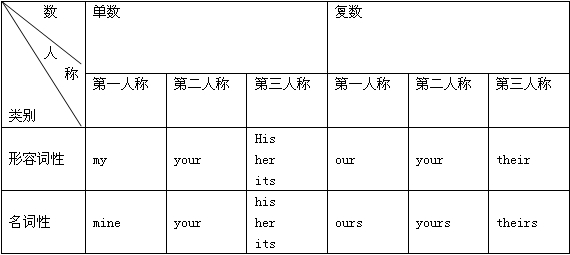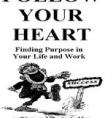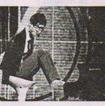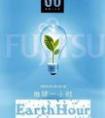Who’s the boy in the photo? Yes, he is Liu Wei, an armless pianist.Liu lost both arms in an accident at the age of 10, but he never gave up his dream of beco-九年级英语
题文
 Who’s the boy in the photo? Yes, he is Liu Wei, an armless pianist. Liu lost both arms in an accident at the age of 10, but he never gave up his dream of becoming a pianist. He couldn’t find a teacher 5 (teach) him to play the piano with his feet. So he learned it by himself. He kept practicing for 7 hours every day. Three years later, he became the champion of China’s Got Talent. And he 6 (choose) as one of the “Top Ten People Who Touched China in 2011.” He often 7 (say) “For people like me, there are only two choice: one is to give up all dream, which will lead to a quick, hopeless death. The other is to struggle without arms to live an outstanding life.” What can you learn from Liu Wei? |
答案
小题1:to teach 小题2:was chosen 小题3:says |
| 本文是记叙文。主要讲述了残疾人刘伟的成功事迹。虽然他没有双臂,但是身残志坚,成为了一位成功的钢琴家。在2011年被选为“感动中国10大杰出人物之一”。 |
据专家权威分析,试题“ Who’s the boy in the photo? Yes, he is Liu Wei, an armles..”主要考查你对 物主代词,单词、词组 等考点的理解。关于这些考点的“档案”如下:
物主代词单词、词组
考点名称:物主代词
- 物主代词:
表示所有关系的代词叫做物主代词,也叫人称代词的所有格。
物主代词分为形容词性物主代词和名词性物主代词两种。
物主代词有人称和数的变化。第三人称单数的物主代词还有性别的变化。 物主代词的用法:
物主代词既有表示所属的作用又有指代作用,例如:
John had cut his finger; apparently there was a broken glass on his desk.
约翰割破了手指,显而易见,他桌子上有个破碎的玻璃杯。
物主代词有形容词性(my, your等)和名词性(mine, yours等)两种:
形容词性的物主代词属于限定词。
名词性的物主代词在用法上相当于省略了中心名词的 -'s属格结构,例如:
Jack's cap 意为 The cap is Jack's.
His cap 意为 The cap is his.形容词性物主代词用法:
1. 形容词性物主代词相当于形容词,在句中只能用作定语,后面必须跟名词。名词性物主代词常用来避免和前面已提及的名词重复。
相当于【形容词性物主代词+名词】。例如:
Is that yourbike? 那是你的自行车吗?
My pen is quite different from his.
2. 如果名词前用了形容词性物主代词,就不能再用冠词(a, an, the)、指示代词(this, that, these, those)等修饰词了。例如:
这是他的书桌。This is his desk.
3. 与形容词一起修饰名词时,形容词性物主代词要放在形容词的前面。例如:
his English books他的英语书。
their Chinese friends他们的中国朋友。
4. 汉语中经常会出现"我妈妈","你们老师"等这样的语言现象,虽然代词用的是"我"、"你们",但实际意义仍是"我的"、"你们的",
所以在英译时,注意要用形容词性物主代词"my","your"。
例如:你妈妈在家吗?
误:Is you mother at home?
正:Is yourmother at home?
5. it's与its读音相同,he's与his读音相似,但使用时需注意它们的区别(it's和he's分别是it is和he is的缩略形式,但its 和his 却是形容词性物主代词) 。
例如: It's a bird. Its name is Polly. 它是一只鸟。它的名字叫波利。
He's a student. His mother is a teacher. 他是一名学生。他妈妈是一位教师
口诀:
有“名”则"形“,无“名”则“名”。
意思是:后面是名词的话,前面就要用 形容词性物主代词。后面没有名词的话,就用名词性物主代词。名词性物主代词的句法功能:
a. 作主语,例如:
May I use your pen? Yours works better.
我可以用一用你的钢笔吗? 你的比我的好用。
b.作宾语,例如:
I love my motherland as much as you love yours.
我爱我的祖国就像你爱你的祖国一样深。
c.作介词宾语,例如:
You should interpret what I said in my sense of the word, not in yours.
你应当按我所用的词义去解释我说的话,而不能按你自己的意义去解释。
d.作主语补语,例如:
The life I have is yours. It's yours. It's yours. 我的生命属于你,属于你,属于你。
名词性物主代词可以用在介词of的后面,相当于“of+名词所有格”。
口诀
有“名”则"形“,无“名”则“名”。
注:
后面是名词的话,前面就要用 形容词性物主代词。
后面没有名词的话,就用名词性物主代词.形容词性物主代词与名词性物主代词的区别:
一.形容词性物主代词起形容词的作用,用在名词前。
例:
1. This is my book.这是我的书。
2. We love our motherland.我们热爱我们的祖国。
二.名词性物主代词起名词的作用。
例:
1. Look at the two pencils. The red one is yours and the blue one is mine.
看那两支铅笔,红的是你的,蓝的是我的。
2. He likes my pen. He doesn't like hers.
他喜欢我的钢笔。不喜欢她的。
3. 注意:在使用名词性物主代词时,必须有特定的语言环境,也就是要省略的名词。
例:
It's hers.是她的。
(单独使用大家不知是怎么回事,不可以这样用)
There is a book. It's hers.那有本书。是她的。
(先提及,大家才明白)
4. 名词性物主代词=形容词性物主代词+名词
为避免重复使用名词,有时可用“名词性物主代词”来代替“形容词性物主代词+名词”的形式。
例:
My bag is yellow, her bag is red, his bag is blue and your bag is pink.
为避免重复使用bag,可写成My bag is yellow, hers is red, his is blue and yours is pink.物主代词“形”变“名”歌:
形物代变名物代
掌握规律变得快
多数词尾加-- s
my,its,his要除外
my把y来变成i
接着再把 ne 带
his,its 不用变
词形一样莫奇怪
考点名称:单词、词组
- 根据最新人教版版和牛津版的初中英语教材的词汇量,一个水平较高的初中毕业生的词汇量应在2400左右。
初中的单词和词组词汇量要求数量会不断增长。 - 初中单词节选100例:
1dryadj干的,干燥的
2ill adj 病的
3hope v 希望
4composition n 作文作品
5 remember v 记起,想起
6 were v 动词be(are)的过去式
7 bit n 一点儿,小片
8 a bit phr. 一点儿
9 healthy adj 健康的,健壮的
10 grow up phr. 成长,长大
11 visit v 参观,访问,拜访
12 ago adv 以前
13 the day before yesterday phr 前天
14 enjoy v 喜欢,享受...乐趣
- 最新内容
- 相关内容
- 网友推荐
- 图文推荐
| [家长教育] 孩子为什么会和父母感情疏离? (2019-07-14) |
| [教师分享] 给远方姐姐的一封信 (2018-11-07) |
| [教师分享] 伸缩门 (2018-11-07) |
| [教师分享] 回家乡 (2018-11-07) |
| [教师分享] 是风味也是人间 (2018-11-07) |
| [教师分享] 一句格言的启示 (2018-11-07) |
| [教师分享] 无规矩不成方圆 (2018-11-07) |
| [教师分享] 第十届全国教育名家论坛有感(二) (2018-11-07) |
| [教师分享] 贪玩的小狗 (2018-11-07) |
| [教师分享] 未命名文章 (2018-11-07) |


![—______ is Jenny.—I’m Gina. Nice to meet you.[ ]A. I’mB. His nameC. I’mD. My name-七年级英语](http://www.00-edu.com/d/file/ks/4/2/wuzhudaici/2019-11-29/small48b153aa794daeb090c5d2505d5cbbac1575042450.png)



